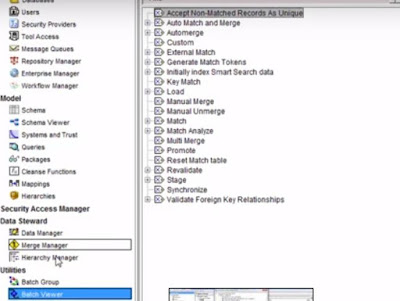Are you
looking for information about how to enable DEBUG mode in the Informatica MDM? Are
you also looking for what configuration files need to be updated to see logs in the DEBUG mode? Would you be interested in knowing what the locations of configuration
and log files are? If so, then you can read this article to get more interesting
details about MDM logging.
Introduction
Intermatica MDM
is a complex application. It involves many processes such as the stage, the load
and the match and merge jobs etc. During execution of these jobs we might
notice any issue. In order to analyze any issue, the log files play an important
role. The log files in DEBUG mode provide more information compared to the log
files in INFO mode.
What are the locations for log and configuration files?
The logs are
stored at the location below:
a) MDM
Cleanse log file: <Install directory>\hub\cleanse\logs\cmxserver.log
b) MDM Server
log file: <Install directory>\hub\server\logs\cmxserver.log
c) To change
MDM Cleanse log file configuration, update the file mentioned below
<Install
directory>\hub\cleanse\conf\log4j.xml
d) To change
MDM Server log file configuration, we can update the configuration file
mentioned below
<Install
directory>\hub\server\conf\log4j.xml
What are the configuration changes required to be made for enabling cleanse logs in DEBUG mode?
To enable the cleanse logs in the debug mode, perform the steps mentioned below:
- Change the priority to "DEBUG" in all the following categories:
<category
name="com.delos">
<priority value="DEBUG"/
</category>
<category name="com.siperian">
<priority value="DEBUG"/>
</category>
<category name="com.informatica">
<priority value="DEBUG"/>
</category>
- To log the database queries change the priority to "ON"
<category
name="siperian.performance" additivity="false">
<priority value="ON"/>
<appender-ref ref="FILE"/>
</category>
- Change the threshold parameter to DEBUG.
- Increase the maximum file size to a higher value if required (Optional)
- Increase the number of files if required (Optional)
<param name="MaxBackupIndex"
value="5"/>
Important points:
- No server restart is required after making changes in the log4j file. The changes will automatically be reflected within a few minutes.
- For a clustered environment, update the log4j file in all the nodes of the cluster individually.
- If the socket server is down, the log messages will be lost
- There will be negligible performance impact as the socket server and MDM server are on the same machine so network latency does not have a big impact





